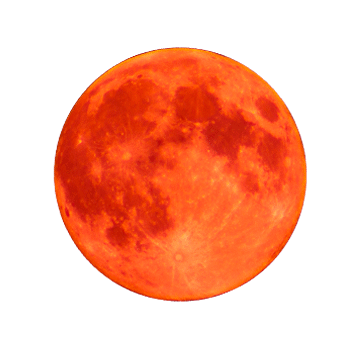Luckily, I had an alternative. If you have been following my blog posts throughout the year, you'll know that I spent a considerable amount of time (and money) designing a very portable photo setup for imaging the eclipse. Fancy words aside - it's just a variable telephoto lens on a DSLR camera. Because it did such a fantasic job imaging totality back in April, it should be no surprise that the same setup is very capable of captuing moon photos.
Next comes the problem with producing yet another HDR moon image. To keep myself entertained with these photos, I try to make them increasingly complex. Recently, I've been seeing HDR moon images with foreground clouds quite often on my social media feeds, so, I decided to give it my own shot. Surely, it'll be more complicated because we have to factor in an entire additional exposure to pick up the clouds, right?
Yes and no. I quickly realized that since the moon was sufficiently close to being full (86% waxing gibbous), a typical over-exposed shot to pick up the glow would also allow for the clouds to be illuminated nicely due to the brightness. The trick here was maintaining a balance in the exposures. Because West Lafayette is about an hour away from the central time zone change, the sun doesn't set until very late here - it was just about 10 pm and I was still deep in twilight conditions. So, I would need to take exposures that were dark enough to keep the twilight light away, but also exposed enough to illuminate the clouds close to the moon.
I found that at ISO 200, a 0.5s exposure did the trick. To pull off the lighting effectively, the clouds would need to be very close to the moon, since at only 0.5s, the brightness diminishes quickly. Additionally, shooting at a zoomed-in focal length of 150mm introcues a deceptive level of depth perception. The clouds would need to be very, very close in order for the lighting to distribute effectively. Thus, the challenge of this image presents itself: patience. Practically all of astronomy involves bargaining with the weather in some capacity (I was tearing my hair out trying to find clear skies for the eclipse in April), and getting clouds in the foreground is no exception. The method here is to wait for a night with a sufficiently illuminated moon, while also having partly cloudy skies. For maximum efficiency, you'll want to do this on a somewhat windy night so that the clouds will pass quickly.
This probably seems counter-intuitive, but I promise that there is a reason. Once you start taking pictures of the moon with clouds in the foreground, you'll find that it becomes difficult to be satisfied with a given formation of clouds. I spent upwards of an hour (which is absurd for any sort of regular moon photography) waiting for the clouds to blow by so that I had many different orientations and formations around the moon. After that, the process is mostly identical to compiling a regular HDR moon image.
Unfortunately I've developed a habit of undertaking HDR moon projects when I don't have the time to do a large deep sky project. This year, we don't have any great lunar eclipses in store - we can't exactly complain after April's spectacle. There is a partial lunar eclipse in September visible from North America, but it only offers a pathetic 3.5% umbral obscuration. Next spring, we will have a total lunar eclipse, and I am very eager to apply all of my HDR moon phototography knowledge to make a very nice picture of it.
This summer has blown by and unfortunately I was not able to offer as many projects as I did last summer, mainly due to my responisbilities as a researcher at Purdue. I'll be back in Chapel Hill in just over two weeks, so hopefully I will have some time to put a deep sky project together before I am completely consumed by classwork and research again. I've enjoyed my time here in Indiana during this summer, but the time has come for me to return home and begin new things again. After my research project here comes to an end, I will hopefully make a post on here about what I was doing and provide some documentation for anyone who is curious.
Lastly, of course, the final image is provided below. I am very satisfied with it. You'll notice that I rotated and flipped it with respect to the original unedited photo, mainly because I wanted to tease out that certain feeling one gets when they see the moon hovering just above the clouds. I'm not sure why, but there's something pretty about it. Reminds me of summer nights back in Florida, with the moon evading what remains of the afternoon thunderstorms.


